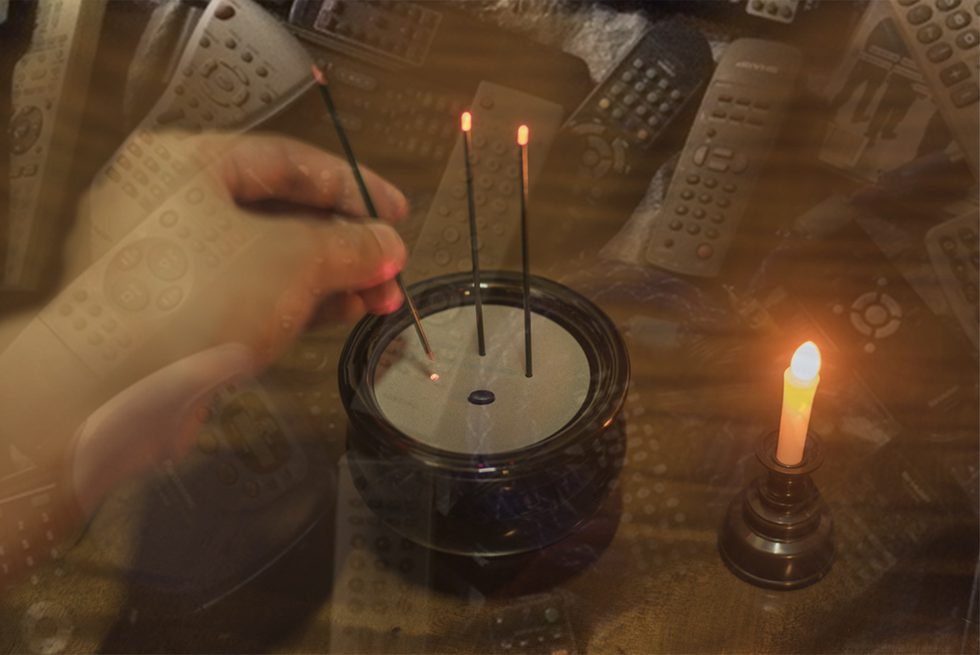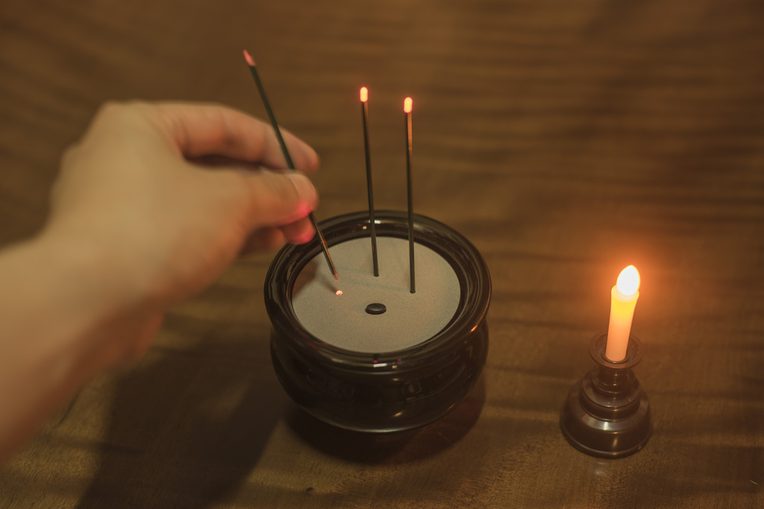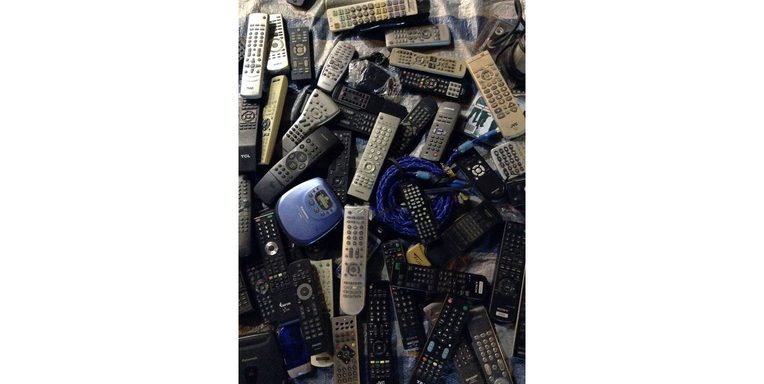Our Electric Afterlives
From the Series: Our Lives with Electric Things
From the Series: Our Lives with Electric Things


Are modern Japanese ancestors electric?
Shortly after my grandmother-in-law died, electric candles and incense became popular in Japan as safe alternatives to open flames on Buddhist ancestral altars. At our local Buddhist market, electric candles range from two-foot monuments to tiny ornaments for Tokyo-style altars, all powered by lithium batteries that illuminate yellow LEDs. Like most contemporary Buddhist goods they are manufactured in China, but have received—the salesperson assures me—five-star Amazon reviews.
Flowers, candles, and incense are among the main offerings placed before altars to venerate the household dead. In popular lore, incense smoke carries messages to the Pure Land where ancestors reside. Candles, conversely, are the medium through which ancestors communicate their presence to the living.
The key selling point of electric candles is fire safety. Many elderly Japanese live alone in wooden houses, and the fear of fire lingers in memories from bombings and earthquakes. Electric candles afford anshin, or peace of mind, for families living apart. Elderly relatives can memorialize the dead without the risk of their own untimely departure.
But the anshin of electric candles stages entirely different sensorial engagements with wick, wax, and flame. The exchange between the living and dead is thus transformed: electric ancestors look, smell, and sound different. These candles do not burn and smoke. Instead, their cheap wiring buzzes. And electric candles do not flicker with movement or at random moments, which would otherwise indicate the presence of another; they are preprogrammed to flicker. It is not an ancestor, but an algorithm, that makes its presence known.
For my grandfather-in-law, a retired Buddhist priest who tends to our altar, electric candles are too anshin, too safe. Greeting the ancestors, he pronounces, should be both comforting and intimidating. Flames may make the ancestors dangerous, but electricity threatens to tame them.

Technology deteriorates more rapidly than ever. Hardware breaks.1 Disks become corrupted. Even the signals of electronic interface and interaction can, themselves, wear away. Plastic-covered blocks of metal hang suspended in cobwebs of archaic standards and connections. The nostalgic reverie of a computer or console dissolves as the very means of its connection gives way to incompatibility: plug it in and the black screen blinks. Input not supported.
The elaborately named XRGB-mini Framemeister Compact Up Scaler Unit (“the Framemeister”) extends a different sort of suspension—of death. Released by the Japanese company Micomsoft at the end of 2011, the Framemeister is the video upscaler most favored by the retrogaming community. Upscalers, along with video processors like line doublers and frame doublers, make obsolete video signals and picture formats palatable to modern screens. Not only do upscalers defy death, they offer the heightened sort of vision that folklore attributes only to undeath. Through the Framemeister, pure RGB (red-green-blue) signals—with a pixel-perfect precision these games never knew in their previous life—are made accessible for continued consumption.
The Framemeister’s powers of preservation do not come cheap, selling for $300–400 if delivered directly from Japan or even more if purchased from importers. Echoing the work of the meisters (masters) who lend the device their name, it becomes an artisanal product. But the discontinuation of one of the integrated circuits critical for the device’s functioning has yielded the painful realization that it, too, may be bound for obsolescence. Still, its users persist, sure in their belief that they will be spared—supported—by some new artisanal assembly of signal.

The Sham Shui Po district in Hong Kong is a local epicenter of electric things. One end of the neighborhood is populated by vendors selling new computer and gaming equipment, gadgets, and accessories. At the other end, small storefront recycling centers take in used televisions, refrigerators, stereos, household appliances, and washing machines, which will be sold to secondhand markets in Africa.
Between the two areas of trade in old and new commodities, a secondhand street market offers a plethora of discarded and obsolete goods for sale on the pavement. Particularly noteworthy in the profusion of secondhand objects is the variety and volume of remote controls separated from their main components. The storefront recyclers intentionally discard them, producing a surplus that is salvaged for resale in the street market.
The first wireless remote control for a consumer electronic product was introduced in 1938 for a radio. Since then, the remote control has been a steadfast accompaniment to the evolution of electronic devices. As the multitude of electric things has increased, so has the abundance of remote controls. The ubiquity of this device demonstrates how it has become a necessary appendage to electric things. Commonplace but not hidden, the remote control serves as a prosthesis, extending human reach across space and enabling us to operate the increasingly complex electric things in our everyday lives. Separate from what it controls, the remote control defies obsolescence, even as its counterparts surrender to it.
1. As Jonathan Sterne (2007, 17) has put it, “‘New’ media technologies as we know them, and all of their components, are defined by their own future decomposition.”
Sterne, Jonathan. 2007. “Out with the Trash: On the Future of New Media.” In Residual Media, edited by Charles R. Acland, 16–31. Minneapolis: University of Minnesota Press.